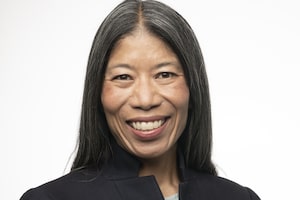Covering the Israel-Hamas war continues to bring new challenges and difficult conversations to The Globe, and to other news organizations. There are very real limitations that affect which stories journalists can cover, and which pictures appear in the print edition or online.
For readers who have questioned the absence of a specific story angle or image, this column offers an inside look at the processes that guide – and occasionally restrict – The Globe’s photo selection. Next week, I’ll return to discuss the range of stories represented in The Globe’s news and opinion pieces on any given day.
A reader emailed on Oct. 10 to express disappointment in the main image selected for that day’s front page. Beneath the headline “Israel begins counteroffensive, vows to ‘change the Middle East,’” appeared the rubble of a Gaza City mosque destroyed by an Israeli air strike. On that day, the second day of print coverage after the instigating attack by Hamas, why did The Globe choose an image that focused on Israel’s retaliatory efforts? The devastation in Israel was the real story, the reader said.
The first days after Oct. 7 were a scramble, because of logistics and the surprise nature of the attack. In Israel, “there were no photographers on the ground to watch it happen,” said Matt Frehner, The Globe’s head of visuals. As a result, there wasn’t much verifiable visual documentation.
In contrast, Gaza was already well populated with photojournalists feeding into the wire services The Globe and other news organizations tap for international coverage.
Before publishing any images, The Globe’s photo editors have to confirm their authenticity, a process that takes hours each day. Was a photo taken where and when its distributor says it was? You may have heard of social media missteps by high-profile users, such as musician Justin Bieber, who on Oct. 11 posted a message of support for Israel on Instagram, accompanied by a photo of damaged buildings in Gaza.
So common are such errors that the Reuters news agency has been posting fact-checks, including an Oct. 17 account stating: “A photo that has been online since August, 2013 and linked to a chemical weapon attack in Syria has been shared on social media alongside the death toll that has been reported by authorities for Palestinian children in the current war between Israel and Hamas.”
To ensure photos and videos published by The Globe are authentic, staff follow a rigorous validation process, which my predecessor, Sylvia Stead, explored in the context of the war in Ukraine in March, 2022. The process, explained then by senior visuals editor Patrick Dell, “includes looking at photos of the same scene, searching for other angles, studying satellite images and using Google Street View.” (You can read that column in its entirety here.)
Photo editors also look at each image’s metadata, including the electronic date stamp that indicates when the photo was taken. Next, they consider whether that timing fits with the event the photo is meant to depict.
With Globe photographer Goran Tomasevic on the ground now, the newsroom can rely on his experienced eye and reporting, but he can only be in one place at a time. For broad coverage, wire services continue to be a necessity.
Concerned with balance, one reader suggested The Globe ensure an equal number of photos are published of each side of the conflict, each day. That isn’t practical or possible for a number of reasons, including the uncertain access to photos that staff are able to validate, and the fact that photo galleries are updated several times a day to reflect the latest events as they happen.
Photo staff are always asking: What do we need to convey? Is this image too graphic? Can we defend this choice journalistically?
“We have in-depth conversations by the hour around photo choice, balance, and are continually reviewing and refining our galleries and print selections based on the facts on the ground,” Mr. Frehner said. It’s heavy work that takes a toll on staff, who look closely at deeply disturbing images of dead children, grieving families, desperation and fear. Mr. Frehner described examining a photo with a child in the background. Globe staff, he said, were “trying to ascertain if their eyes were open – signalling life – or not.”
Balance is a constant consideration, even if it is not exactly reflected in the number of photos posted in The Globe’s online gallery at the moment you view it on your phone or laptop.
The Standards Editor column returns Nov. 4, in print and online, to look at how The Globe determines the range of coverage offered in news articles and opinion pieces. To read about the newsroom guidance behind language use, see the Oct. 20 Standards Editor column here.
 Sandra E. Martin
Sandra E. Martin